Statistics
After twenty years of publication, conducting a quantitative, retrospective survey on the use of computers in archaeology represents a considerable challenge. Besides a frequency analysis of the distribution of the articles by year and nationality of the contributors, diverse subjects have been examined. These include inventory systems, databases, computer graphics, GIS and digital cartography, multimedia systems, Internet applications and museum documentation systems.
These applications are recontextualised within the main archaeological research areas involved in the process of data digitisation: Cultural Resource Management, classification of archaeological finds, surveys and excavations, data diffusion and education. They also open more complex theoretical perspectives suggested by the use of computers: data encoding and formalisation; evolution of languages, standards and metadata; the geographical dimension of knowledge; from reality to virtuality; and communicating archaeology through the web
Overview by year
Through evaluating the content of Archeologia e Calcolatori in a systematic way, it is possible to extract editorial details as well as information about the increase in publication or the people who participated in it. Throughout the years there have been a fairly constant number of contributions per issue. There is a noticeable peak in 1996, as a result of the publication of the proceedings of the 3rd International Symposium on Computing and Archaeology, which saw the participation of 109 authors coming from 16 countries, mostly European but also from US and Mexico.
An overview of the 27 nationalities of 561 authors gives a picture of the scholars who have contributed to the journal. The three dominating nationalities are Italian, French and English, followed by Spain and the US. Such a variety reflects the high interest raised by the journal among the specialists in the field of archaeological computing as well as the increasing number of international research projects which have chosen to present their results in Archeologia e Calcolatori.
Following the multilingualism principle promoted by the journal, the languages include Italian (317 articles) with 57% of the total number of contributions; English (166 articles) with 30% of the total, followed by French (53 articles) with 10%. The other languages are less frequent, Spanish and German representing the remaining 3% of the total amount.
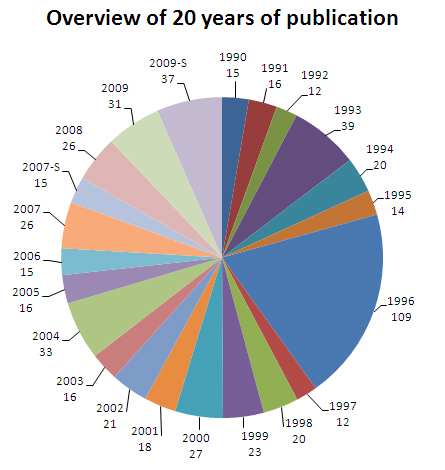
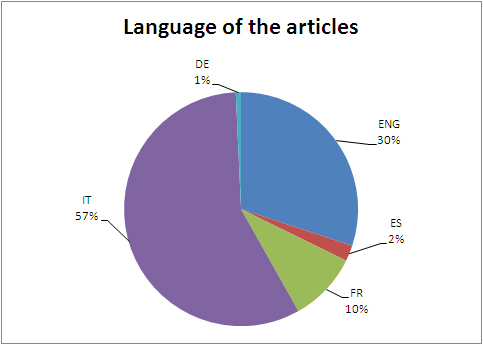
| Nationality | Count |
|---|---|
| AT | 2 |
| AU | 3 |
| BE | 1 |
| CA | 1 |
| CH | 3 |
| CZ | 4 |
| DE | 9 |
| DK | 3 |
| ES | 31 |
| FI | 2 |
| FR | 61 |
| GB | 48 |
| GR | 12 |
| HR | 1 |
| IE | 2 |
| IL | 3 |
| IRQ | 1 |
| IT | 346 |
| LI | 1 |
| MX | 2 |
| NL | 2 |
| NU | 1 |
| PL | 5 |
| PT | 3 |
| SE | 1 |
| UA | 1 |
| US | 12 |
Nationality of authors
Overview by classification
The classification of the articles which have been published during the last twenty years in Archeologia e Calcolatori focuses on computer applications and the archaeological subject areas in which these applications have been used. The analysis of these classifications reveals a number of interesting trends which are strongly related both to the intrinsic interdisciplinarity of this field of studies and the new trends towards the integration of diverse methods on the same technological platform.
Some preliminary results based on a study of the frequency with which different subject matters are dealt with , are presented here. These first considerations mainly concern the continuity of some topics over the years, the birth of new research paths and the reduction of others, all of which are indicative of a sector in continuous evolution, in which technological progress plays a significant role. Obviously, when reading the results, it is necessary to take into account that they can be affected, from a quantitative point of view, by the publication of special thematic issues and conference proceedings dedicated to specific topics.
Computer application per year
Throughout the years, there has been a fairly constant number of contributions discussing the application of computer graphics and CAD as well as articles considering multimedia and web tool applications. They represent two sectors - the initial and final stages of documentation and education - that clearly demonstrate the widespread use of computers in the diverse phases of archaeological research.
Statistical analysis is one of the more important applications that have a fairly constant rate of recurrence, notwithstanding the general decrease in their success, but in keeping with the journal's policy. Contributions discussing databases were more frequent in the 1990's, and focused upon data storage and retrieval. Only in recent years has an interest in web-based database applications become apparent. The same can be observed for simulation and Artificial Intelligence applications, which seem to be more frequent in the 1990's issues, and less popular in the following decade.
On the other hand, articles dealing with applications such as Remote Sensing and GIS were less frequent in the early 1990's and more popular in the following years, as a reflection of technical developments. Several peaks of frequency for GIS are noticeable, in particular in 1998 and in 2008, as a result of the publication of the thematic issues dedicated respectively to GIS and web-GIS. The same can be observed for contributions about Virtual Reality: in recent years an interest in virtual archaeological reconstructions has become apparent, as is evident from the contents of the two Supplements.
The journal's focus on methodological problems is mainly represented by the articles on the history of applications, which had its peak in the 20th issue, dedicated to the birth of archaeological computing. From a theoretical point of view, it is also important to note a reasonably constant number of contributions discussing problems related to data encoding, which constitutes a basic step for each kind of data formalisation.
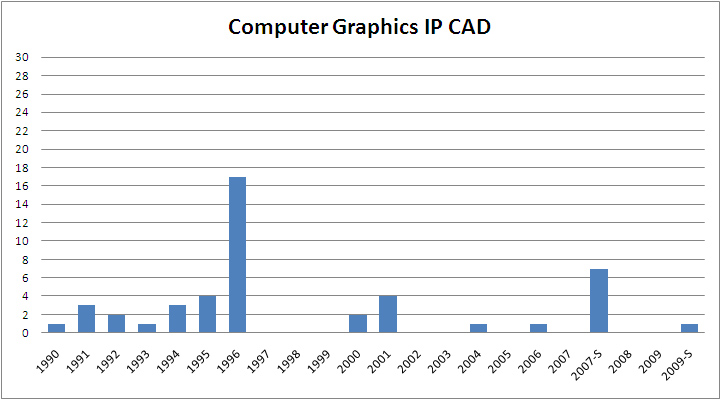
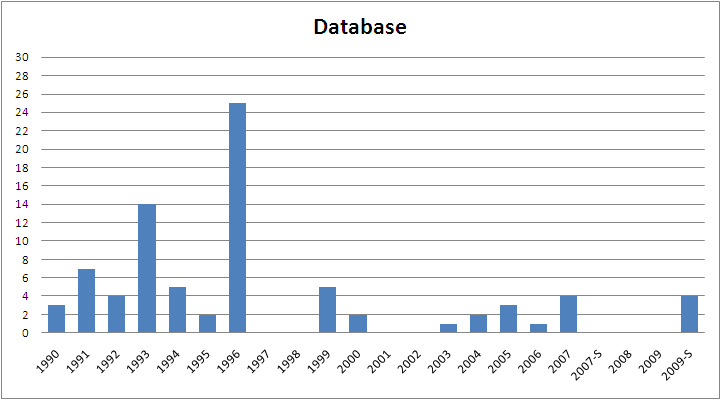
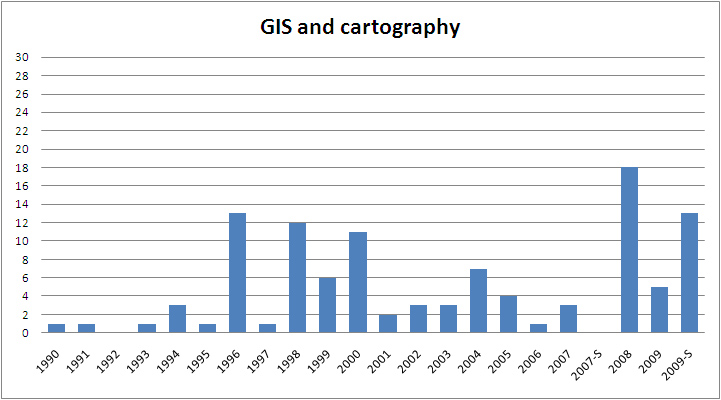
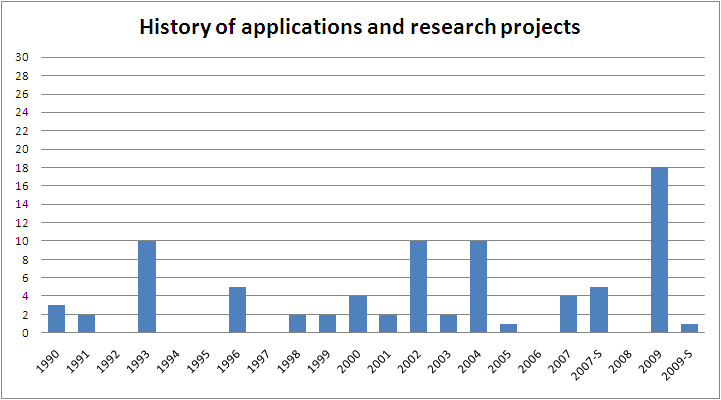
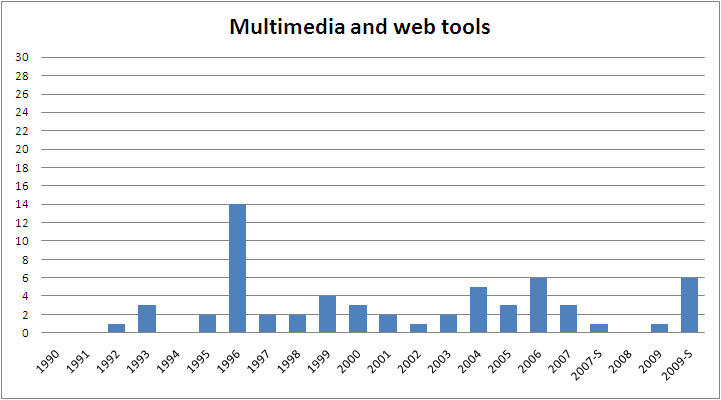
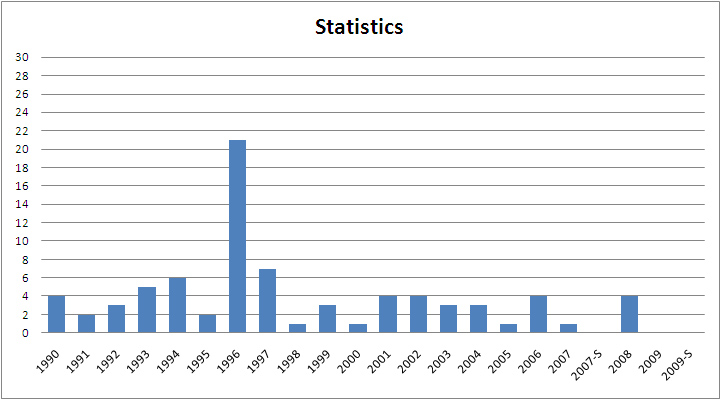
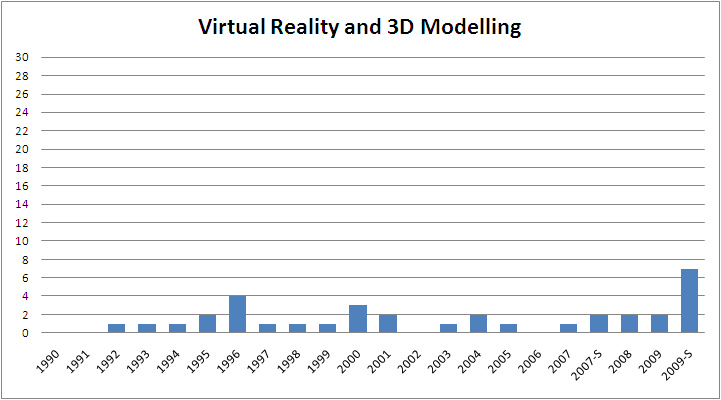
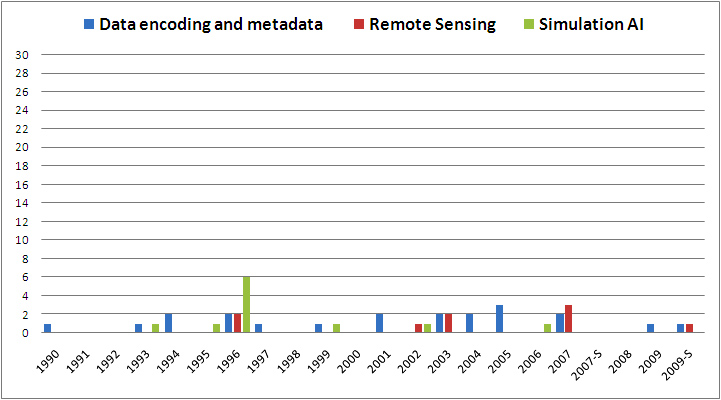
Subject area per year
The frequency analysis of the archaeological subjects discussed in the journal reveals that there has been a fairly constant number of articles on theoretical and methodological problems, which is one of the main goals of Archeologia e Calcolatori. The same can be said for the two sectors of Cultural Resource Management and data dissemination and education. Other subjects which display a higher proportion of contributions throughout the years mainly involve research work conducted in the field (survey and excavations) - one of the most prevalent areas of application - or in the laboratory (classification of archaeological finds).
In the graphs presented below, there are several recurrent peaks for most of the subjects in conference proceedings and thematic issues. In particular, it is worth noting the peak of articles concerning data dissemination and education in 1993, due to the publication of the proceedings of the International Conference on Data and Image Processing in Classical Archaeology. Contributions discussing applications to specific sectors, such as archaeometry, epigraphy and numismatics and conservation and restoration are more frequent in the 1990's and less so in the following decade. On the other hand, articles dealing with geoarchaeology were more popular in the late 1990's and the following decade, as a reflection of technical developments in data acquisition tools.
In summary, the correlation between applications and research areas shows as a result that there have been a fairly constant number of articles discussing computer graphics, statistics and databases in a large number of subject areas. On the contrary, other computer applications display a high proportion in specific archaeological subjects. For example, GIS and cartography and Remote Sensing applications are strictly related to the area of survey and excavations, whilst the application of multimedia and web tools focuses mostly on data dissemination and education.
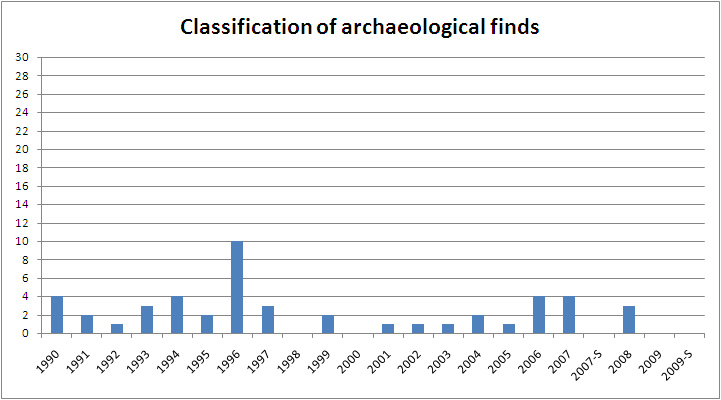
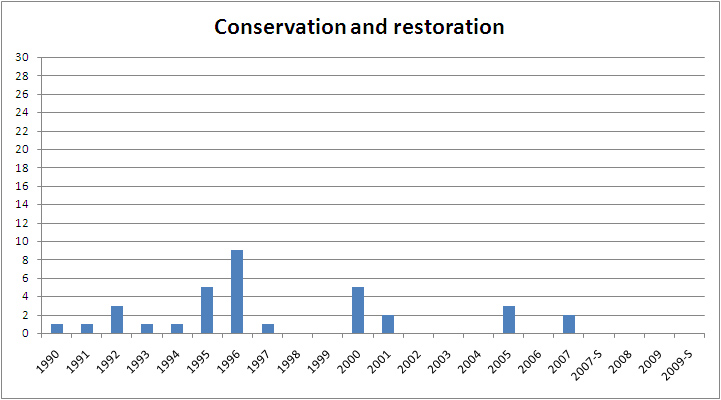
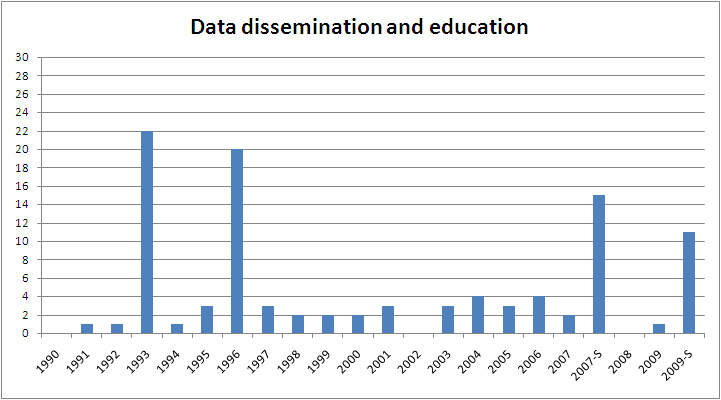
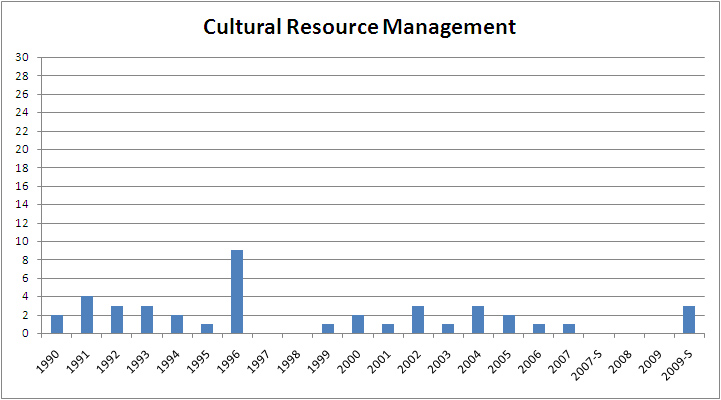
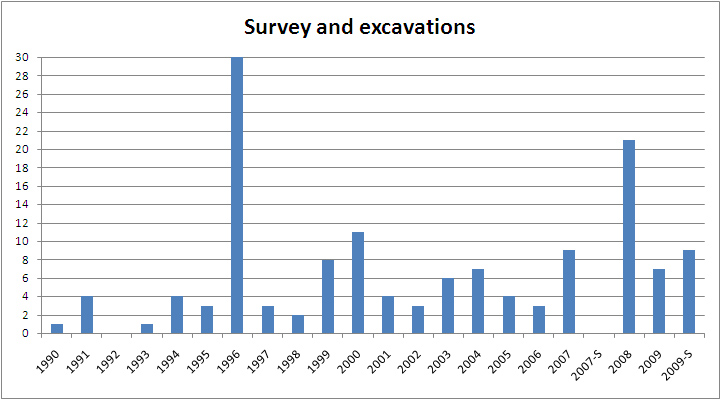
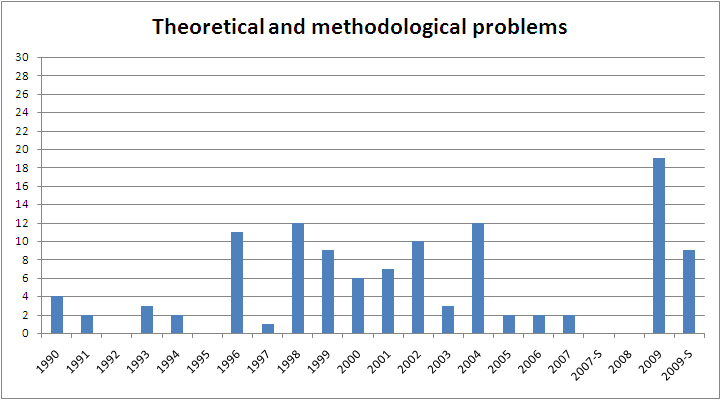
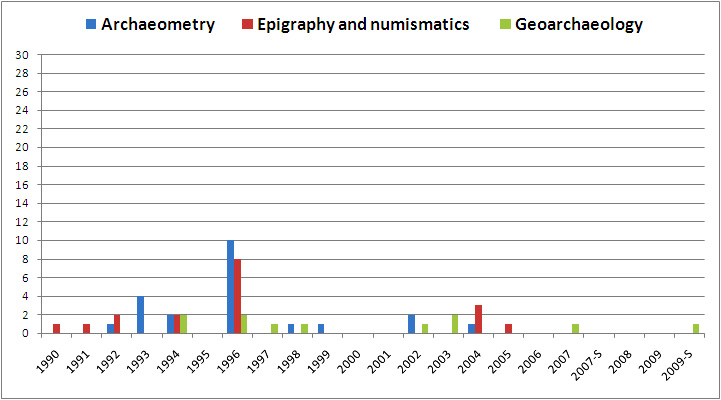
This website uses only technical cookies strictly necessary for its proper functioning. It doesn't perform any profiling and doesn't use third party cookies of any kind.
Read our privacy policy for additional information.
By clicking 'OK' or closing this banner you acknowledge having read this information and accept the website's contents.
